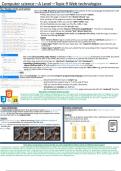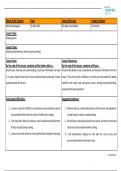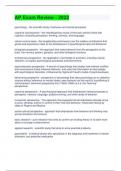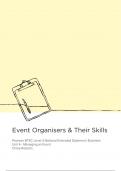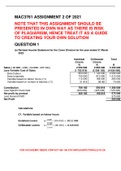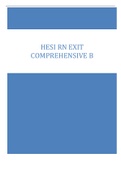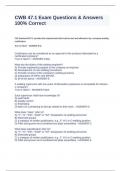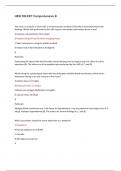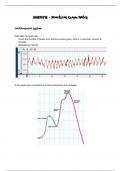My 7 Wonders of the world website
This is the HTML (hypertext markup language) of the website: A mark up language developed for multi
-media documents, such as the world wide web pages.
•HTML documents must start with <html> and end with </html>.
•Data about the page is located in the <head></head> tags.
•The contents of the page are stored in the <body></body> tags.
•To give a webpage a title, you use the <title></title> tags.
•To put headings on your page: use the <h…></h…> tags.
•To have paragraph text use the <p></p> tags.
•To insert an image use the <img src=“Filename.png/gif/jpeg”> - this has no closing tag.
•To insert a hyperlink use the <a href=“link”>[insert text]</a>.
•There are 2 lists: unordered (<ul></ul>) and ordered (<ol></ol>), inside the tags, to create a
list item use the tag <li></li>.
Forms
•Use <form></form> tags to create a form, you can have different attributes such as <form
actions> to decide what happens when the user submits the form.
•<input type=“text”> lets the user input text , the ‘required’ attribute means that the user
must do it.
•<input type=“submit”> lets the user submit the form providing all the ‘required’ inputs have
values that have been input.
This is the CSS (cascading styles sheets): A definition of the formatting and layout of elements of an HTML document.
The stylesheet may be part of the HTML document, or stored as a separate file linked to the document.
•To link a style sheet to a html tag, do: <link href="stylesheet.css" rel="stylesheet">.
•Identifiers (Defined with a ’.’) are used for items that only exist once on a page such as navigation bars where as
classes (Defined with a ’#’) are used for items that exist more than once on a page.
•When you use either identifiers/classes, you need to define them using the <div></div> tag, put the elements you
want in a class inside of these tags.
This is the JavaScript : An object-oriented computer programming language commonly used to create interactive
effects within web browsers.
•JavaScript elements have a <script> tag.
•Command lines need to have a ‘;’ at the end of them.
•‘{}’ are used to define sections of code/ subroutines.
•Functions and variables are defined.
•In this example, a button from the HTML page when pressed calls the ‘random()’ function.
How does a browser display a page?
Browsers read through HTML pages and displays them, the hyper text markup language allows this to happen as it acts
as the structure of the page, Cascading style sheets are also important in displaying the web page as this is the design/
aesthetic of it. JavaScript is the behaviour of the page and makes it more interactive for the user. Together all 3 lan-
guages give the browser enough information to be able to display the web page.
Lossy compression Lossless compression
A compression scheme where their generally involves a loss of resolution A compression scheme that allows the original images to be
in parts of the image where experiences shows that it will be least no- recreated.
ticed.—A file that has been compressed using lossy compression cannot
be reverted back to its original state. Used in:
•Text files as all data is required for this, nothing must be removed
Used in: like lossy compression does.
•High resolution images where removing slightly different shades of •Articles and bank records etc.
colours is unnoticeable yet compresses the file size.
•Videos where removing repeated sequences of pixels would compress
the file size.
•Audio files.
How does compression work and why are some algorithms better suited to different data types?
Compression is used to reduce upload and download times for larger files: the two types of compression schemes are lossy and lossless. Lossy is
a compression scheme where it involves a loss of quality because it permanently removes repeated sequences of pixels to reduce the overall
data size, it can not be returned to its original state so it is not recommended to do this on text files where it is important to keep the text file
identical to what it initially was. This is what lossless compression is for, it is a compression scheme that allows the original images to be recreat-
ed for example text files can be heavily compressed then returned to their original state without any data being loss, this is done using a ZIP file
which compresses data and requires you to unzip it to return that data to its original form.

